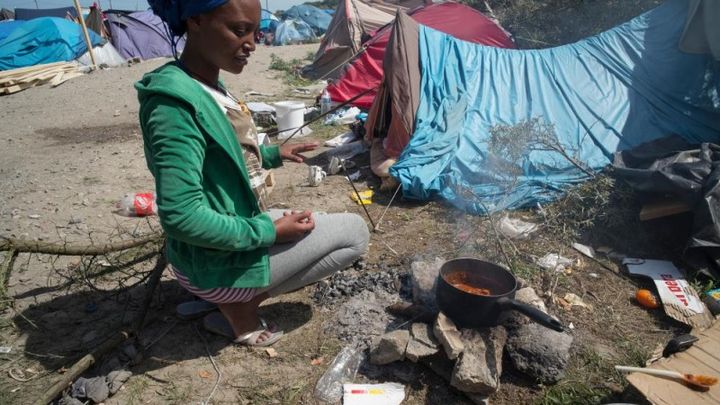
Stockings and lights for Calais
Donation protected
I will be taking part to a third trip traveling to Calais to help the refugees who are currently living in the “Jungle”, a sand dunes ghetto where they are now relegated. We will be there at the end of January 2016.
During a first 5-days visit at the beginning of November 2015 I had the chance to meet and visit some of the women who live in the camp, who make up 5 -10% of the camp's population, the rest 90-95% being all-male. Because the women don't feel too safe roaming around the camp especially in the evening, they tend to spend most of their time sitting or laying inside their tents without any heating; the tents rest on topsoil and the level of humidity coming from it, especially in the winter and when it rains, is extremely high.
I would spend approximately 12 hours each day at the camp and I could really feel the cold and humidity getting to my bones, but I was lucky enough to be able to walk "home" and sleep in a warm bed before going back to the camp the next day. Refugee women are not so lucky. Furthermore, clothes are impossible to dry if they get wet or washed, given the temperatures and the living conditions.
The average temperature of the upcoming months in Calais will be 5°C with high chances of rain. Humanitarian organizations tend to provide refugees with warm jackets and socks. All the women I spoke to said they would really need warm stockings/leggings to keep their legs warm.
After raising 375£ in the "Stockings for Calais" campaign I was able to buy 150 fleece leggings and deliver them personally to the women in the camp, mainly Eritrean, Kurds and Syrian refugees during a second trip to Calais at the beginning of December 2015.
I realized there were more women living in other areas of the camp I was not able to reach at this time therefore I plan on going back in January to bring more leggings and also solar-powered lights with the help of a small group of London-based volunteers. These lights prove extremely useful as they can be charged during the day and used at night to lighten up the tents instead of candles which tend to be one of the main causes of the extremely frequent fires that destroy people's shelters and belongings.
During a first 5-days visit at the beginning of November 2015 I had the chance to meet and visit some of the women who live in the camp, who make up 5 -10% of the camp's population, the rest 90-95% being all-male. Because the women don't feel too safe roaming around the camp especially in the evening, they tend to spend most of their time sitting or laying inside their tents without any heating; the tents rest on topsoil and the level of humidity coming from it, especially in the winter and when it rains, is extremely high.
I would spend approximately 12 hours each day at the camp and I could really feel the cold and humidity getting to my bones, but I was lucky enough to be able to walk "home" and sleep in a warm bed before going back to the camp the next day. Refugee women are not so lucky. Furthermore, clothes are impossible to dry if they get wet or washed, given the temperatures and the living conditions.
The average temperature of the upcoming months in Calais will be 5°C with high chances of rain. Humanitarian organizations tend to provide refugees with warm jackets and socks. All the women I spoke to said they would really need warm stockings/leggings to keep their legs warm.
After raising 375£ in the "Stockings for Calais" campaign I was able to buy 150 fleece leggings and deliver them personally to the women in the camp, mainly Eritrean, Kurds and Syrian refugees during a second trip to Calais at the beginning of December 2015.
I realized there were more women living in other areas of the camp I was not able to reach at this time therefore I plan on going back in January to bring more leggings and also solar-powered lights with the help of a small group of London-based volunteers. These lights prove extremely useful as they can be charged during the day and used at night to lighten up the tents instead of candles which tend to be one of the main causes of the extremely frequent fires that destroy people's shelters and belongings.
Organizer
Sara Selleri
Organizer